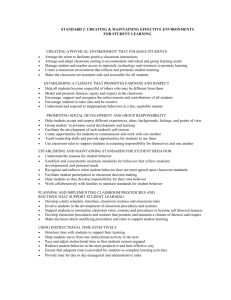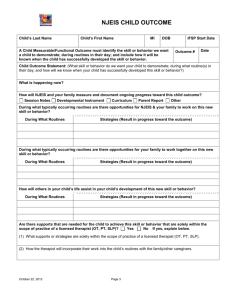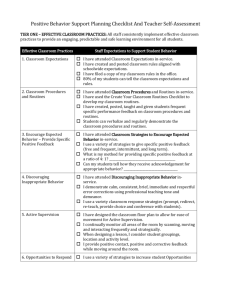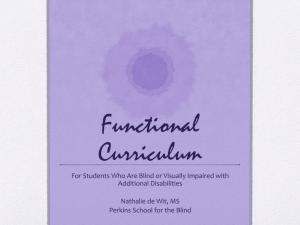Seminar 1-2012 - WordPress.com
advertisement
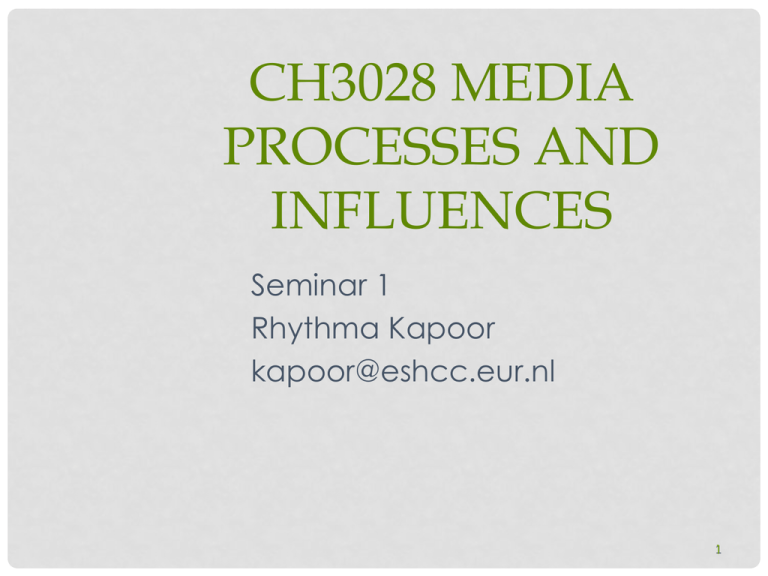
CH3028 MEDIA PROCESSES AND INFLUENCES Seminar 1 Rhythma Kapoor kapoor@eshcc.eur.nl 1 1 Plan for Today PRACTICAL INFORMATION MEDIA USE SURVEY MEDIA/SOCIETY/ORGANIZATIONS ASSIGNMENT 1 2 PRACTICAL INFORMATION • Weekly Seminar (incl. Lecture, Discussion, In class activities) • Book: Media/Society (4th edition) • Additional Readings • Course Blog 3 ASSESSMENT • 3 Assignments • 1 Mid-term • 1 Term Paper Passing grade: 5.5 4 RULES OF CONDUCT • Please be on time • Many-to-many communication • Attendance is compulsory • Be prepared to present your work, ideas • Regularly check Course Blog for news and information 5 When in doubt, have problems or any other issues…. Inform Me! E-mail Me! kapoor@eshcc.eur.nl Me! Me! Me! 6 TOPIC PRESENTATIONS-MEDIA ARTIFACTS • Due: Throughout the course • You will be assigned one class session for which to find media artifacts related to the day's readings. • The kinds of artifacts that are most helpful for this class include: news articles, critical analyses, podcasts and interesting visual/graphical materials. • Artifacts should also be posted on the class blog with an accompanying short description. 7 MEDIA USE SURVEY -Handout -Class Discussion What are some media issues that interest you the most? 8 OVERVIEW • • • • • • • • Media & Socialization The Rise of Mass Media Structural Constraint and Human Agency Mass communication vs. Media communication A Model of Media and the Social World Media professionals, organizations, and culture Shared conventions, roles, and routines in media organizations Structure-Agency relationship in media organizations 9 RISE OF MASS MEDIA Discuss: Milestones in Different forms of Media -Print -Broadcast -Sound and Film -Internet and New Media Technologies didyouknow? http://www.ted.com/talks/jonathan_klein_photos_that_changed_the_worl d.html 10 STUDYING MASS MEDIA • • • • What are media? Are all media mass media? Are all media now within ‘new media’? Why should we study them? - media in socialization STUDYING (MASS) MEDIA Big Question: Who (says) What (to) Whom (in) What channel (with) What effect? (Harold Lasswell, 1948) • production of media • content of media • reception of media readers or audience media message or product Social World Technology media industry Simplified Model of Media and the Social World MEDIA AND SOCIAL WORLD TODAY, MASS MEDIA SERVE A S A POWERFUL SOCIALIZING AGENT. HOW? 14 SOCIALIZATION The main argument: • People interact • People develop rules of interaction • Over time and with repetition people become accustomed to these rules • These rules become normalized • People internalize these norms • These norms create people’s social/cultural identity “Socialization”—The process whereby we learn and internalize the values, beliefs, and norms of our culture and, in so doing, develop a sense of self. Examples? 15 MEDIA AND SOCIALIZATION Today, mass media serve as a powerful socializing agent: • Media affect how we learn about our world and interact with one another • Most of our political knowledge is based on mass media • Media act as watchdogs against abuse of power • Media constructs reality • Teaches and influences youngsters • Create common world views- values, ideologies, perceptions, customs, stereotypes Discuss: Some examples? Case studies? ‘Electronic hearth’?? 16 SOCIAL CONSTRUCTION OF REALITY While reality exists, media users negotiate the meaning of that reality The same media product may mean very different things to different people • Example: A music video may elicit different responses from a 15-year-old fan of the band and a parent concerned about stereotypically sexist images that may be present in the video Some examples? 17 SOCIOLOGY OF MEDIA • Importance of Social Relations • “Looking-glass self” • Our sense of identity and individuality emerges from our social interaction with others • The Interplay Between the Social System • Relationships between institutions • Interaction between media industry and government • Relationships within an institution • Relationship between media producers and studios • Relationship between institutions and individuals • Relationship between media contents and audiences 18 STRUCTURAL CONSTRAINT AND HUMAN • “Structure” and “Agency” areAGENCY core concepts of sociology • Structure • Any recurring pattern of social behavior • Example: family structure, educational system • Structure limits the human agency • Agency • Intentional and undetermined human action • Example: students under an educational system • Structure limits the agency, but agency reproduces and changes social structure 19 STRUCTURE AND AGENCY IN MEDIA • Relationships Between Media and Other Institutions • Social, economic, and political institutions set certain limits on the media • how social structures affect the media industry and how the media affect other social institutions • Relationships Within the Media Industry • Internal workings of mass media • the social positions, roles, practices, and personnel of media • Relationships Between the Media and the Public • How the audience interacts with media products • How media contents are interpreted by the audience 20 MASS COMMUNICATION VS. MEDIA COMMUNICATION Mass Communication • One to many transmission • Few channels • Unified audience • Lack of individual control • Typical medium-TV • Unified, controlled content • Media producersPower Media Communication • Many-tomany,Interactive • Many channels • Diverse audience • Open & individual control • Internet • Diverse, open, User generated content • Media users 21 A MODEL OF MEDIA & THE SOCIAL WORLD • Media messages about the movement affect audience • Audience interprets the meaning and significance of the message Media Message / Product • Industry creates messages about the event • Norms of news influence media personnel Readers / Audience Social World Media Industry • Audiences use new technology to access media messages • Specific formats of technology influence audience’s media use Technology • Technology affects industry practices • Industry makes use of new technology to cover the event 22 MEDIA ORGANIZATIONS & NEWS REPORTING 23 MEDIA ORGANIZATIONS PERSPECTIVE Media professionals do not make products under circumstances chosen by themselves, but under circumstances directly found, given, and transmitted from the past. 24 AGENCY VS. STRUCTURE IN MEDIA ORGANIZATIONS • “Agency”: human individuals • “Structure”: organizations, traditions, culture, conventions (and economics and politics) • Every media occupation (agency) requires socialization into roles and group culture (structure) 25 NEWS ROUTINES AND CONVENTIONS • The organization of news work • News organizations need to know when and where the required amount of news will happen every day • Before anything even takes place, news organizations already make decisions about where to look for news 26 NEWS ROUTINES AND CONVENTIONS • Front-page news story selection • Technical, rule-based selection • Newsworthiness criteria • Convention-based selection • What’s happening in editorial meeting • Collective discussion of editors 27 NEWS ROUTINES AND CONVENTIONS • The conventions of “Beats” and “Rounds” • Beats—sites where news is likely to take place • Rounds—schedule for visiting locations and talking to sources • Beats and rounds are work routines that define what reporter is exposed to 28 MEDIA ORGANIZATION AOL Time Warner Warner Bros Pictures Time, People, Enter. Weekly AOL Online Services Warner Music Group Moviefone Cable Networks QUESTION • So many people involved; how do these people cooperate and produce a media product?? • • • • daily fresh start? agreements? conventions? social roles? CONVENTIONS • widely used practice or technique in a field • identifying conventions • explaining conventions • conventions are constructed by human beings • convention are not static but dynamic • media professionals: conventions are the result of routines ROUTINES • Where do we find news? What is newsworthy? ROUTINES • Where do we find news? • news networks • beats • rounds • Routines define newsworthiness ROUTINES - EXAMPLE • What is the news? • • • • • • • large scale close to home clarity time scale relevance consonance Personification • negativity • significance • drama and action EXAMPLES? source: McQuail, 2005: 310 ROUTINES - GATEKEEPING • • • • process of selection pass through the gate into the news channel also: literary agents, publishers, tv networks, et cetera related to media access ROUTINES-OBJECTIVITY Objectivity: "The belief in objectivity is a faith in 'facts', a distrust of 'values', and a commitment tot their segregation." (Croteau & Hoynes, p. 132) ROUTINES • Objectivity • a media practice • strict separation of fact and value objectivity factuality truth relevance informativeness source: Westerstahl 1983, in: McQuail, 2005: 202 impartiality Balance Neutrality ROUTINES-OBJECTIVITY 6 key practices: • • • • • • maintaining political neutrality decency and good taste documentary reporting practices standardized formats training reporters as generalists editorial reviews • How do these interact with routines? ROUTINES Consequences of objectivity principle: • similarity in news accounts • socially constructed • reflection of relative power • some people are more newsworthy than others • news net excludes events as well as includes ROUTINES • limits of objectivity: • new and less obvious forms of bias • news is at best reflection of small part • claims of media freedom • no distinction between true and false expression • diversity • objects reflected are not passive SOCIALIZATION & ROLES • "Roles can be thought of as the bundles of expectations that are associated with different social positions." (Croteau & Hoynes, 2003: 136) • socially constructed • internalized • not rigid • dynamic • learned through socialization JOURNALIST'S ROLES • informative disseminator • mirror or channel • interpretative investigator • interpreting and investigating complex questions, government claims • adversary • fourth estate • watchdog NEWS ROUTINES AND CONVENTIONS • Have You Ever Wondered Why • News reports are remarkably same across the media • There is so much news on the activities of official institutions Charlie Brooker 43 RISE OF USER-GENERATED CONTENT • Users and mainstream media • Audience comments and contributions • Example: CNN iReport • Pro-Am efforts • Professional and amateur collaboration • Example: The Guardian, blogs • Collaborative creation • All amateur • Example: Wikinews • Citizen journalism • Every citizen can be a news reporter • Examples: OhMyNews, Current TV 44 GROUP ASSIGNMENT 1: THE PRACTICE OF OBJECTIVITY • Form groups of 4 • Write a news story about an event (e.g. campus event, neighborhood, local event etc.). • Observe the norms of objectivity—maintaining balance, avoiding highly charged language, attributing opinions to sources, keep your own personal views out of the story. • Max 500 words. • Give suitable title etc. • Post the story on the course blog by Sunday, 25.11.2012, 5pm. • Read the stories posted on our CB and comment on at least 2 stories. (Not your own!) • Preferably: Try not to comment blindly, follow the given comment and reply to it. 45 ASSIGNMENTS • • • • • Hand in on time, otherwise not graded Bring paper copy to class Upload on BB & Course Blog Email me if you have problems Write name, student no, word count, page no., staple pages etc. TOPIC PRESENTATIONS • Groups MINUTE MEMO FOR YOUR BLOG What is the most important concept or idea you have learnt about today? 48

